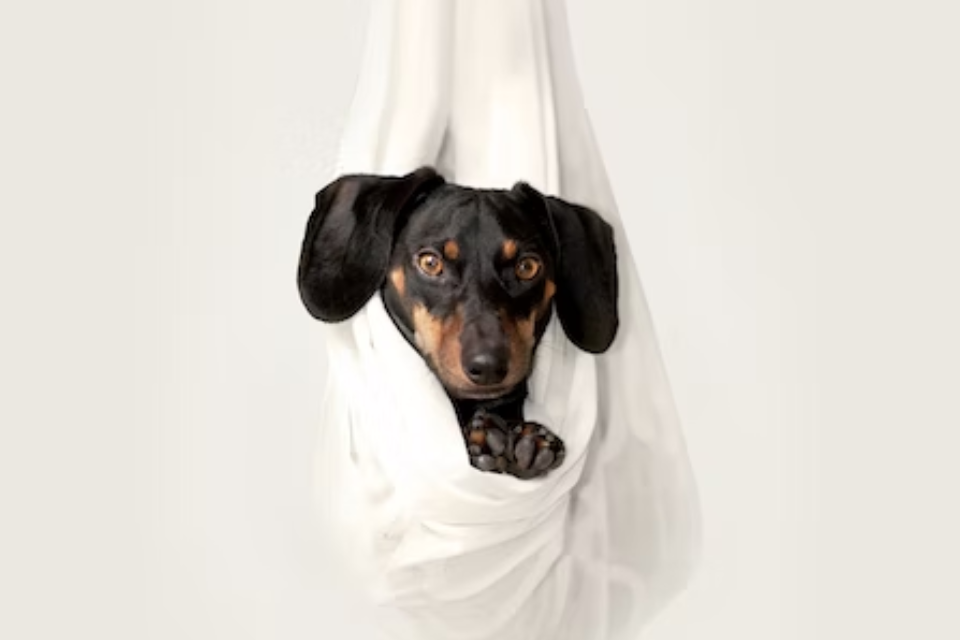As an owner of multiple Mini Dachshunds over the years, I have learned a lot about these amazing dogs and their breeding process. Mini Dachshunds, also known as Wiener Dogs or Doxies, are a popular breed due to their unique appearance, loving personalities, and loyalty to their owners.
In this post, I will be sharing my knowledge and experience on the selective breeding of Mini Dachshunds, their genetics, the breeding process, and the ethics surrounding Mini Dachshund breeding. I will cover the factors that influence their breeding, how they are bred through selective breeding, the genetics behind their physical characteristics, the breeding process, and the potential ethical concerns surrounding their breeding.
My hope is that this post will provide you with a better understanding of the Mini Dachshund breed and their breeding process. Whether you are considering owning a Mini Dachshund, already own one, or just have an interest in learning more about them, this post is for you. So, let’s dive in and learn more about how these adorable pups are bred.
Key Takeaways:
- Mini Dachshunds are bred through selective breeding, which has led to the development of unique physical and behavioral traits.
- The genetics of Mini Dachshunds play a crucial role in their appearance and health, but can also lead to genetic health issues.
- Ethical considerations surrounding Mini Dachshund breeding include the potential for breeding-related health problems and the impact on breed overpopulation in shelters.
Selective breeding of mini dachshunds
Selective breeding is the process of intentionally breeding certain traits into a population of animals, while breeding out undesirable traits. This is how Mini Dachshunds are bred to have their unique physical characteristics, such as their long bodies, short legs, and variety of coat colors and textures.
Factors that influenced Mini Dachshund’s breeding
The breeding of Mini Dachshunds began in Germany in the 19th century, with the intention of creating a dog that could hunt badgers, rabbits, and other small game. Over time, their breeding also focused on their physical appearance, resulting in the Mini Dachshund we know and love today.
How Mini Dachshunds are bred through selective breeding
When breeding Mini Dachshunds, breeders carefully choose a healthy dam and sire to ensure that their offspring have the best chance of being healthy as well. Breeders also have the option of inbreeding or outcrossing when breeding their dogs.
Inbreeding involves breeding closely related dogs, such as siblings or cousins, to produce offspring that have a similar genetic makeup. While this can increase the likelihood of passing on desirable traits, it also increases the likelihood of passing on genetic health issues. Outcrossing, on the other hand, involves breeding unrelated dogs to increase genetic diversity and reduce the risk of health issues.
Controlling genetic traits
Breeders can also use a variety of techniques to control genetic traits in their Mini Dachshunds. For example, they can use DNA testing to screen for genetic health issues and only breed dogs that test negative. They can also track the traits of each dog and their offspring through record-keeping to ensure they are only breeding the most desirable traits.
As a Mini Dachshund owner, I have seen the benefits of selective breeding first-hand. My dogs have all had the classic long body, short legs, and a variety of coat colors and textures that make them so unique. However, it is important to remember that selective breeding can also have its downsides. Breeding for certain physical traits can result in genetic health issues that may affect the dog’s quality of life.
Overall, selective breeding plays an important role in producing the Mini Dachshund breed that we know and love today. As long as breeders are responsible and prioritize the health and well-being of their dogs, selective breeding can be a valuable tool in creating healthy and happy Mini Dachshunds.
Mini dachshund’s genetics
Mini dachshunds are small dogs that have been bred selectively over many generations. They have unique physical characteristics, such as their elongated bodies and short legs, which are a result of specific genes that have been bred for over time.
One of the genes responsible for the mini dachshund’s elongated body is the FGF4 gene, which is involved in limb development. Researchers have found that a mutation in this gene is responsible for the short legs of the dachshund breed. This mutation causes the development of shortened long bones in the limbs, which gives the dachshund their characteristic “sausage” shape.
Another gene that has been studied in dachshunds is the IGF1 gene, which is associated with small body size. This gene has been found to be present in higher frequency in miniature dachshunds, suggesting that it plays a role in the breed’s small size.
Additionally, dachshunds can inherit certain health conditions genetically, such as intervertebral disc disease (IVDD), which is a common condition that affects their spinal discs. The condition is caused by a combination of genetics and environmental factors. Researchers have identified a genetic mutation in the CHRNA1 gene that increases the risk of IVDD in dachshunds.
It’s important to note that while genetics play a role in the physical characteristics and health of mini dachshunds, environmental factors also have an impact. Factors such as diet, exercise, and overall health can affect the expression of certain genes and the development of health conditions.
The breeding process
Breeding Mini Dachshunds is not as simple as just putting two dogs together and hoping for the best. Breeders must take a number of factors into account when choosing which dogs to mate in order to ensure that the resulting litter is healthy and conforms to breed standards.
Choosing the right pair
One of the most important factors when breeding Mini Dachshunds is choosing the right pair of dogs. The breeder will typically choose a male and female dog that have desirable traits and are free from any genetic defects or health issues. Breeders often use pedigree charts to trace the lineage of potential breeding pairs to ensure that they are not closely related, as inbreeding can lead to health problems in the offspring.
Timing the breeding
The timing of the breeding is also critical. Dogs are only fertile for a limited period of time during their reproductive cycle, and it is important to breed the female during this time in order to maximize the chances of a successful mating. Breeders often use veterinary exams and blood tests to track the female dog’s reproductive cycle and determine the optimal time for breeding.
Natural breeding vs. artificial insemination
There are two main methods of breeding Mini Dachshunds: natural breeding and artificial insemination. Natural breeding involves allowing the male and female dogs to mate naturally, while artificial insemination involves using a veterinarian to implant the male’s semen into the female’s uterus. Both methods can be successful, but artificial insemination may be preferred in cases where the male or female dog has health issues that make natural breeding difficult.
Pregnancy and birth
Once the female dog has been successfully bred, the gestation period lasts approximately 63 days. During this time, the dog may require additional care and attention to ensure a healthy pregnancy. Breeders often monitor the dog’s diet and exercise regimen during this time and provide regular veterinary checkups. When it is time for the puppies to be born, the breeder may assist the mother in the delivery process, and the puppies will typically be kept with their mother for the first several weeks of their lives.
Breeding Mini Dachshunds is a complex process that requires careful attention to genetics, timing, and the health of both the male and female dogs. By following best practices for breeding, breeders can produce healthy, happy puppies that will make excellent pets for families looking for a loyal and loving companion.
The ethics of mini dachshund breeding
While mini dachshunds are beloved by many, it is important to consider the ethical implications of breeding these dogs. Some breeders prioritize appearance over health, resulting in dogs with genetic health problems that can lead to a lifetime of suffering. Additionally, the high demand for mini dachshunds has led to an increase in puppy mills and backyard breeders, where dogs are often kept in inhumane conditions and not properly cared for.
When considering purchasing a mini dachshund, it is important to do your research and find a reputable breeder who prioritizes the health and well-being of their dogs. This includes health testing for genetic conditions, providing proper veterinary care, and ensuring that their dogs are kept in clean and safe environments.
Another ethical concern is the issue of overbreeding. Breeding dogs too frequently can lead to physical and emotional health problems for both the mother and her puppies. Responsible breeders will limit the number of litters a female dog produces and will ensure that she has adequate time to rest and recover between litters.
It is also important to consider the impact of breeding on the larger dog population. With so many dogs in shelters and rescues in need of homes, it is important to ask whether breeding more dogs is truly necessary. Adopting a dog from a rescue or shelter can be a rewarding experience and can provide a loving home to a dog in need.
Overall, while mini dachshunds are adorable and beloved by many, it is important to approach breeding with a sense of responsibility and ethics. By doing your research and working with a reputable breeder, you can ensure that your mini dachshund is healthy and well-cared for. Additionally, considering adoption from a shelter or rescue can provide a loving home to a dog in need.
Conclusion
In conclusion, owning a mini dachshund can be a wonderful experience, but it is important to be informed about the breed and responsible breeding practices. Mini dachshunds have a fascinating history and have been selectively bred for their unique physical characteristics, which can also lead to potential health issues. Understanding the genetics of the breed can help owners make informed decisions about breeding and genetics testing.
When it comes to breeding, it is crucial to find responsible and ethical breeders who prioritize the health and well-being of their dogs. The breeding process involves careful selection of breeding pairs, health testing, and proper care for both the dam and the puppies. It is important to avoid puppy mills and backyard breeders who prioritize profit over the health of the dogs.
Overall, mini dachshunds are a beloved breed with a loyal following, but it is important to approach ownership with care and responsibility. By educating ourselves about the breed’s history, genetics, and breeding practices, we can ensure that our furry companions live happy, healthy lives.

